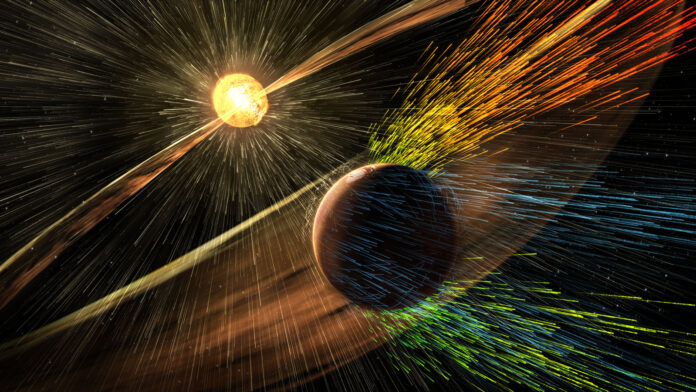Space weather, a dynamic and complex phenomenon driven by solar activity, cosmic rays, and magnetic fields, extends its influence far beyond the reaches of our atmosphere. While often associated with its impact on satellites and space missions, space weather also holds significance for aviation, influencing communication systems, navigation, and even flight routes. Understanding the correlation between space weather and aviation operations is becoming increasingly crucial in ensuring the safety and efficiency of air travel.
Space weather primarily stems from the activity of the sun, with solar flares and coronal mass ejections (CMEs) releasing immense amounts of energy and charged particles into space. These particles, when directed towards Earth, can interact with our planet’s magnetic field, creating geomagnetic storms that impact the Earth’s upper atmosphere.
The Earth’s magnetic field acts as a shield against the harsh effects of space weather, deflecting charged particles away from the planet’s surface. However, during intense space weather events, disturbances in the Earth’s magnetic field can induce currents in the atmosphere, affecting radio communications and navigation systems used in aviation.
Aviation relies heavily on radio communication systems for air traffic control and pilot-to-pilot communication. During geomagnetic storms induced by space weather, disruptions in the ionosphere can interfere with high-frequency radio signals used for long-distance communication, potentially causing static or signal loss, impacting communication between aircraft and control towers.
Navigation systems, especially those relying on GPS (Global Positioning System), are integral to modern aviation for precise positioning and route guidance. However, space weather events can disturb the Earth’s ionosphere, leading to inaccuracies in GPS signals. Pilots and navigation systems may experience signal degradation or increased errors in position accuracy, potentially affecting flight paths and navigation procedures.
The impact of space weather on aviation is not limited to communication and navigation disruptions. Cosmic rays, high-energy particles originating from sources outside our solar system, can pose radiation risks to crew members and passengers during high-altitude flights, particularly for frequent fliers and aircrew. Monitoring and mitigating these radiation risks are essential for ensuring flight crew safety.
Aviation authorities and meteorological agencies have recognized the significance of space weather in aviation operations. Efforts to monitor and forecast space weather events, akin to traditional weather forecasting, aim to provide timely warnings to airlines and air traffic control centers, enabling them to take preventive measures and mitigate potential disruptions.
Mitigation strategies for space weather impacts on aviation involve adaptive measures such as rerouting flights away from polar regions during geomagnetic storms to minimize communication and navigation disruptions. Additionally, providing pilots and aircrew with real-time updates and alternative procedures during space weather events ensures safer and more efficient flights.
Collaboration between space weather researchers, meteorologists, aviation authorities, and airlines fosters the development of tailored space weather forecasts and alerts specifically designed for aviation. These specialized forecasts aim to provide detailed information about potential disruptions, allowing aviation stakeholders to make informed decisions to safeguard flight operations.
The study of space weather’s impact on aviation extends beyond immediate operational concerns. Research initiatives explore the long-term effects of prolonged exposure to cosmic radiation on aircrew health and devise strategies to mitigate these risks. Understanding these impacts is crucial for developing guidelines and safety protocols for crew members.
As technology evolves, advancements in space weather monitoring and prediction systems continue to enhance aviation safety. Integrated efforts between space agencies, meteorological organizations, and aviation stakeholders pave the way for more accurate space weather forecasts tailored to the specific needs of aviation operations.
The integration of space weather considerations into aviation safety protocols highlights the necessity of a holistic approach to ensuring flight safety. By acknowledging and addressing the potential impacts of space weather on aviation, the industry takes proactive steps towards mitigating risks and optimizing operational efficiency.
The collaboration between space weather scientists and aviation experts underscores the interdisciplinary nature of addressing challenges in modern aviation. As space weather continues to influence aviation operations, the collective efforts to understand, forecast, and mitigate its impact will remain pivotal in ensuring safe and reliable air travel in the face of cosmic conditions.
























